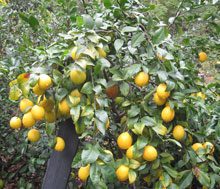 When we garden, even though it’s not rocket science, there is good science on which to base our plant’s needs. All plants need air, light, water and space to grow. This article is about amounts and timing of these needs.
When we garden, even though it’s not rocket science, there is good science on which to base our plant’s needs. All plants need air, light, water and space to grow. This article is about amounts and timing of these needs.
Light and moisture are the most important requirements for growth and development of our garden plants and houseplants. Too much is just as bad as not enough. A plant cannot grow in the dark, and some plants do like it very shady. Many plants need full 6-8 hours of sun to flower and fruit. My roses will not bloom in a north-facing garden, but love to grow out on the fence in plenty of light. You must be a detective to discover what plants need to thrive.
Nutrients and fertilizers should be timed to be the most effective for certain crops. Lawn and shrubs need to be fertilized when they are actively growing. Is the lawn about to be dormant or not out of dormancy? Nitrogen fertilizers are not needed in the fall. We really shouldn’t use winterizing fertilizers after September. This late application of nitrogen can encourage pests and diseases in lawns. Some vegetables are called heavy feeders. Corn, lettuce, broccoli, and tomatoes will need to be side dressed 2-3 times during the growing season. Organic farmers using manures need to apply them 120 days before harvest. Manure should be composted, and it should not smell like ammonia. There are many good sources of fertilizer sold commercially, and following the recommendations of your soil test will eliminate the guesswork. You don’t need to buy more than the crop needs.
Pruning is another concern for many new gardeners. There are several goals accomplished by correct pruning and doing it at the right time. It is always a good time to prune something that is diseased or broken. Use sharp clean tools. Plants that are badly overgrown are also good candidates for shaping and trimming. Fruit trees like apples and pears are pruned when the trees are dormant and shaped to let sunlight and air circulation into the canopy. Fig trees may not ever need to be pruned if they are planted in the right place. Fall pruning is not usually recommended for evergreen shrubs and trees, because it may encourage new growth that wouldn’t have time to harden off before frost. Winter winds or freezing temperatures can burn tender growth. If pruning is delayed for too long in spring the energy of the plant that went into spring flush of growth will be wasted. It is preferable to prune evergreen and deciduous plants when they are dormant. Consider the natural shape of the tree or shrub, and remove stems and branches which grow towards the center, and any that are diseased or damaged. The Clemson Home and Garden website has diagrams for correctly pruning fruit and ornamentals. There is even a fact sheet on not murdering crepe myrtles. Timing, science and common sense are all good gardening companions.
http://www.clemson.edu/extension/hgic/








